Column: Casks
For the After Dark Issue we took a ramble in the Scottish countryside for a whisky or three
In Scotland the night falls in a congealing greyness. It’s the disintegration of light rather than its departure—or as the locals call it, “the gloaming.” To call the weather that drapes the moors “inclemental” would be to understate the role of tweed in clemency, and would also sell short the emerald-soaked greenery and the rumbling craggy vistas—even as they fade to black in the mist and the gloaming. Little wonder perhaps, that it was the kilted Scotsman who—Prometheus-like—bottled the finest fire of man’s invention and learnt to fight off the elements with some of the greatest whiskies on earth.
[

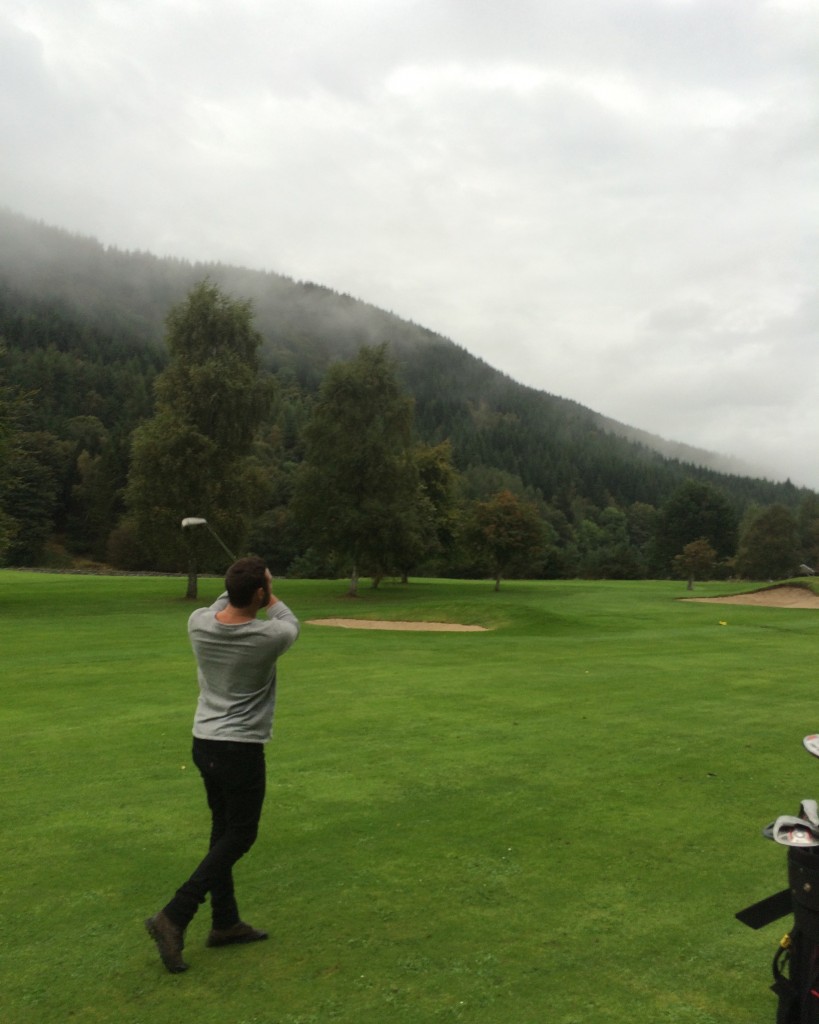
](http://images.squarespace-cdn.com/content/v1/56c346b607eaa09d9189a870/1487292224799-DKV2GL27BZB6TNYYN19J/IMG_0857.jpeg)
I had come to Scotland at the invitation of Dewar’s to tour and sample their most treasured malts and blends. Arriving in Edinburgh we drove north into an ever-greening landscape, upwards into the legendary area known as ‘the Highlands.’ Here, amidst a landscape of rich forests, luxury castles, golf courses, and sumptuous agriculture, we visited the Aberfeldy distillery. The Aberfeldy malt that is produced here is blended into the backbone of the Dewar’s line of blended whiskies and is also aged in oak barrels and sold as Aberfeldy single malt.
[

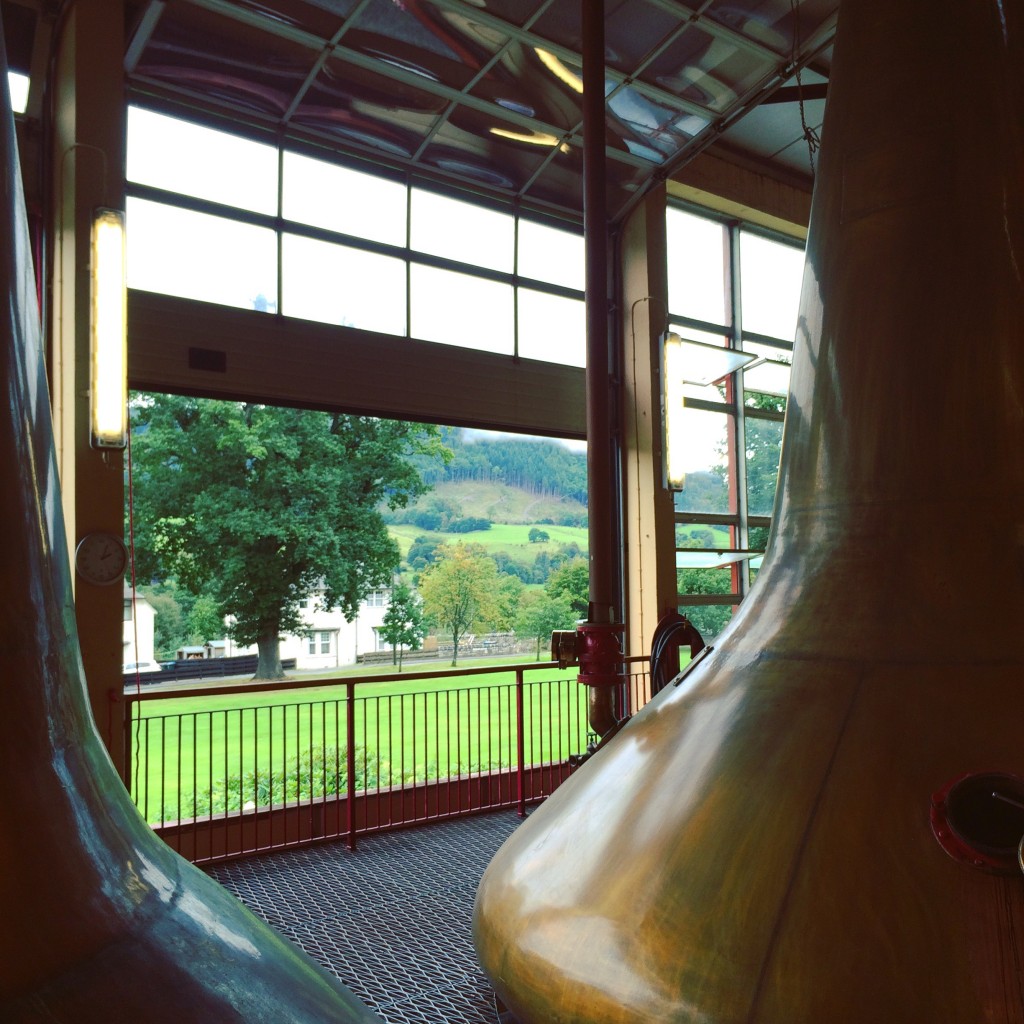
](http://images.squarespace-cdn.com/content/v1/56c346b607eaa09d9189a870/1487292228264-LNQXUIC0ZDD5SD6OO2NI/IMG_0896.jpeg)
Entering a distillery for the first time is a barrage on the senses with the hum and the heat of heavy industry, and the alluring reek of fermenting liquor. Distilleries are incredible testimonies to global commerce—in operation since 1898, the four bulging, ice-cream cone shaped copper stills produce a staggering 3,500,000 litres of whisky annually which is bottled and shipped to markets all over the world.

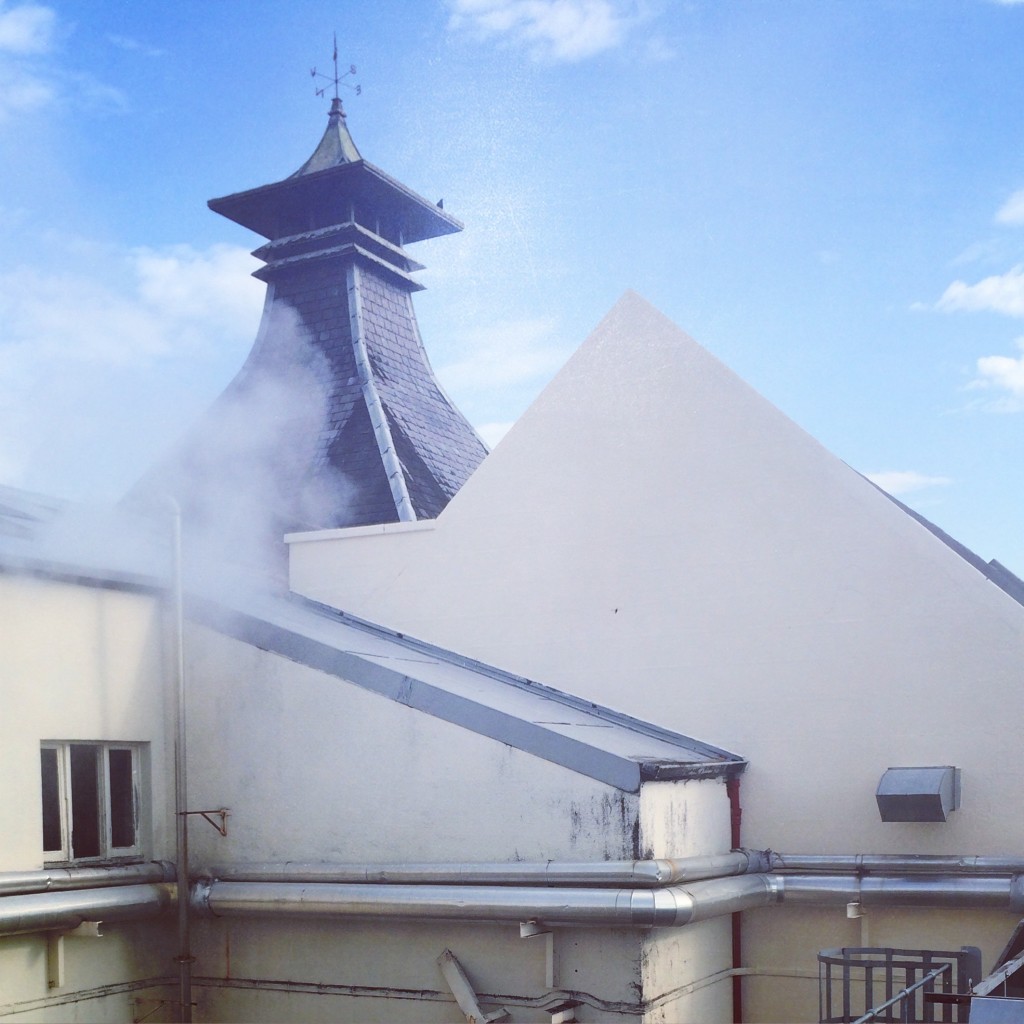
Arguably the first Scotsman to perceive the global potential of Scotch Whisky was the second generation distiller Tommy Dewar, whose father John Sr. opened the Dewars distillery in 1846, and who along with his brother John Jr., founded Aberfeldy whilst building their family’s brand into the world’s highest selling whisky by the late 19th century.
[

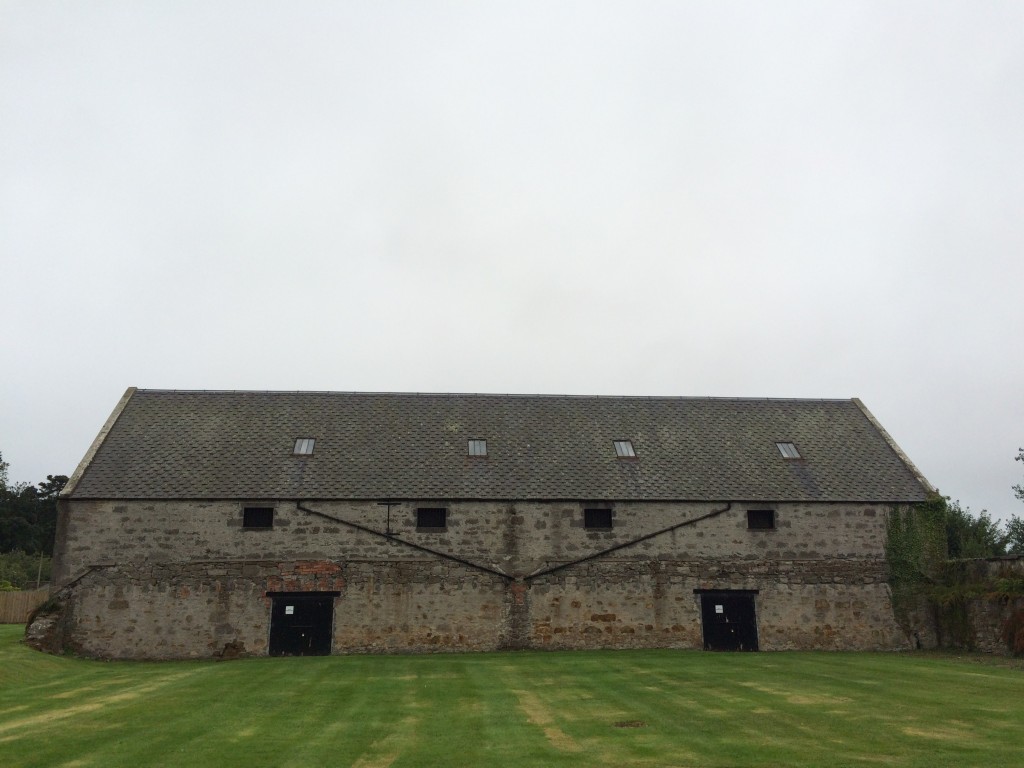
](http://images.squarespace-cdn.com/content/v1/56c346b607eaa09d9189a870/1487292227974-IV7ZNCNHHA12RNJXZ1ND/IMG_0895.jpeg)
Contemporary scotch owes much to the Dewar clan. While the history of Scottish distilled alcohol is lost in the mists of time, the drink we know today as Scotch Whisky—malt or grain whisky aged in oak casks—is truthfully a product of the last two centuries, and bears little resemblance to the _uisge beatha_ (“water of life”) that the Scots distilled from at least the 15th century. John Sr. was one of the early proponents of blended whisky—combining multiple barrels from different distilleries for a more palatable taste—and founded a thriving local business. However it was his two sons who transformed Dewars into a prototypical global mega-corporation, which by the time of their deaths (1929 for John Jr., and 1930 for Tommy) was recording profits of more than a million pounds per annum—which in today’s terms equates to economic power (income relative to output of the economy) of over $2 billion USD—a sum close to the annual profit of all of Disney’s theme parks. “John Jr. was the serious business mind,” Dewars official archivist Jacqui Seargeant tells me, “very good at financing and blending, while Tommy Jr. was the flamboyant salesman.”
[

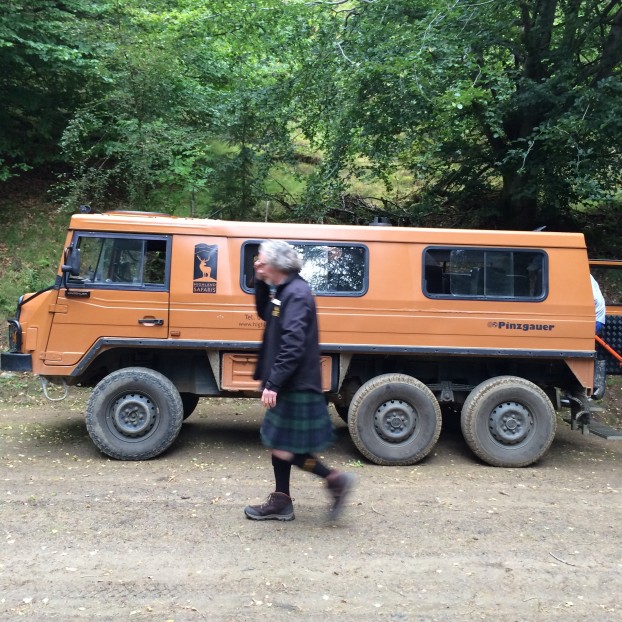
](http://images.squarespace-cdn.com/content/v1/56c346b607eaa09d9189a870/1487292224009-7SPC1YN2E442MQV4K9ZU/IMG_0782.jpeg)
“Tommy traveled the world and became the walking Dewars advertisement,” she continues, “he was very ahead of his times in terms of marketing.” Tommy lived a charmed, and—let’s face it—fabulous life of luxury and travel as a quintessential 'gay bachelor,' with tremendous patronage of the arts, and many famous friends, Tommy was also a marketing genius, and created an identity for his product that still resonates with how Scotch is sold today. Tommy’s vision arguably peaked with what was one of the first ever forays into a _Blade Runner_\-esque nightscape, with an 80-foot high Scotsman who loomed over the Thames embankment in 1911 and tilted his elbow to quaff a scotch—the biggest neon-light, mechanical sign the world had ever seen.
[

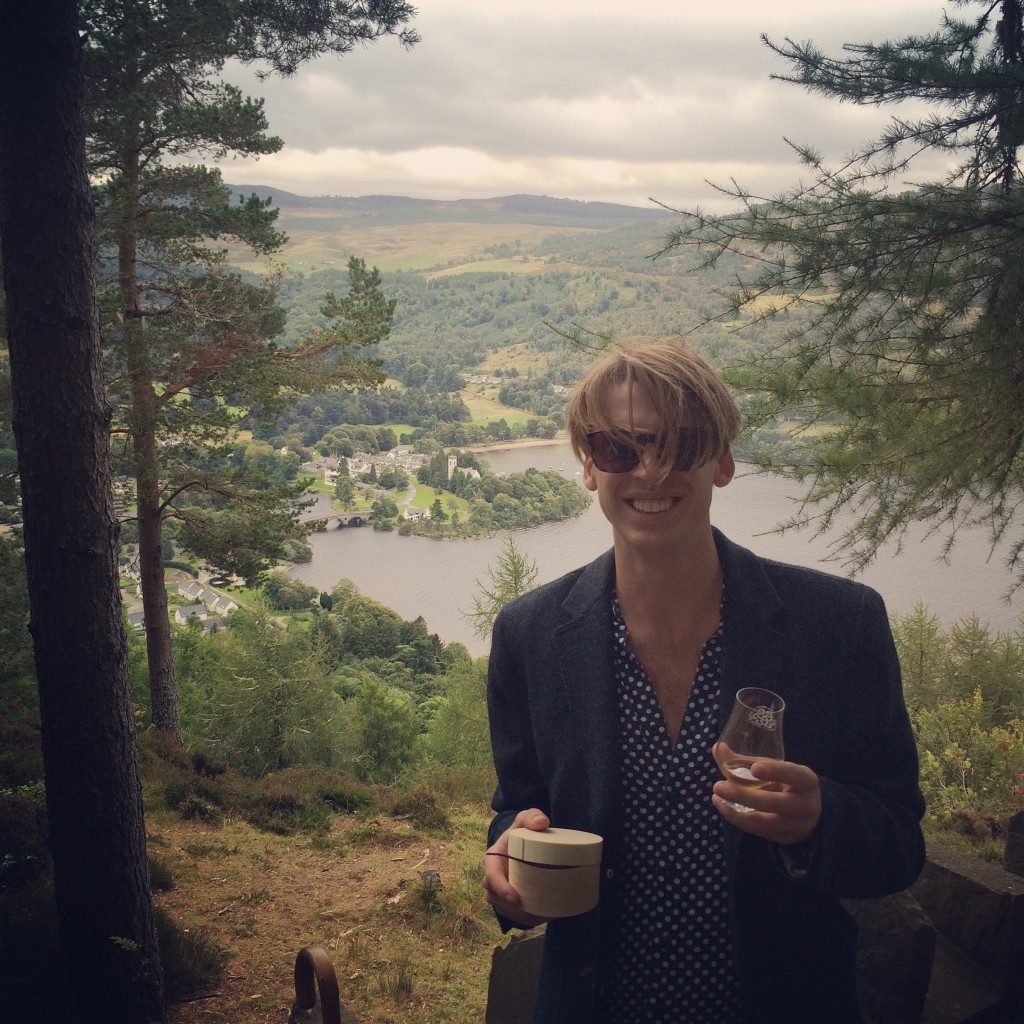
](http://images.squarespace-cdn.com/content/v1/56c346b607eaa09d9189a870/1487292224172-VPQZS2FOI7HXW2RYVD8L/IMG_0793.jpeg)
Trialling the product before 10AM and continuing the sampling into the small hours requires a stout constitution, and a similarly neon disposition but _Flaunt_ staff are nothing if not glowing and resolute. Over two days we delved into the tasty Aberfeldy and Dewar’s range, before heading northwards up into what is arguably the most famous whisky region of them all: the Speyside—the home of distilleries that scoop their water from the hallowed river Spey (Wikipedia counts 43 such enterprises). Here we visited two distilleries: Royal Brackla, and Craigellachie. The Craigellachie line ages in prime numbers, (13, 17, 23, 31), and although we sampled a rarer (and also delicious) Craigellachie 31, the 23 was my favorite Scotch of the trip, with an incredibly rich flavor: sherry and cinnamon, and as yummy as Nana’s fruitcake, yet filled with scrumptious fire.
[

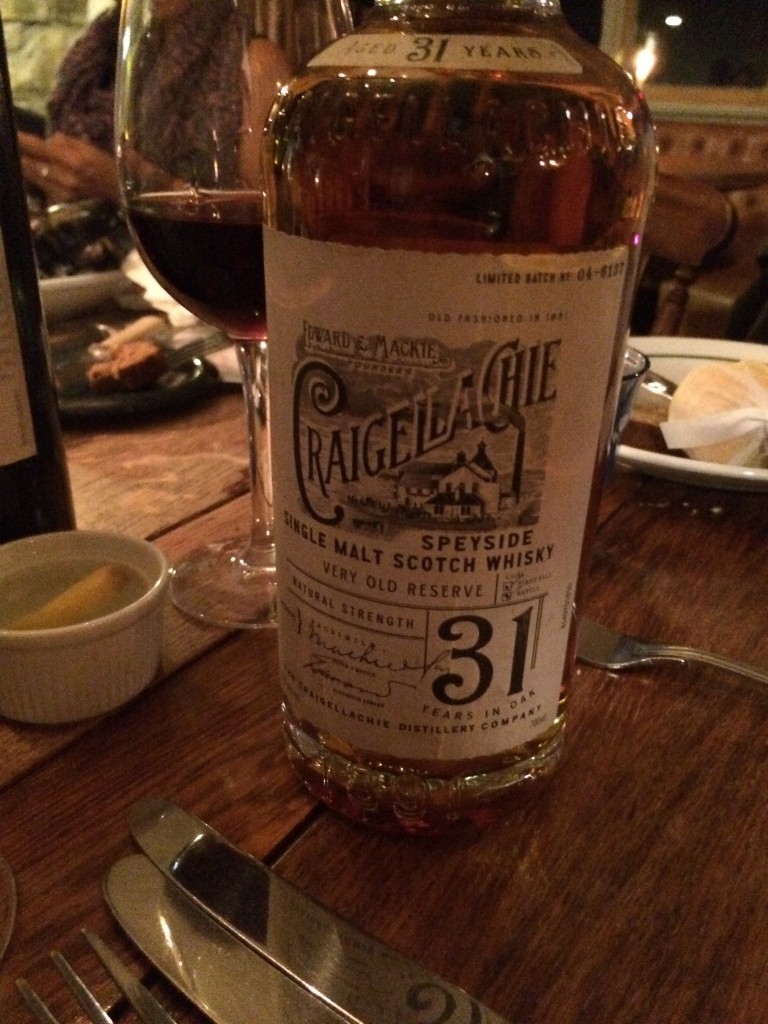
](http://images.squarespace-cdn.com/content/v1/56c346b607eaa09d9189a870/1487292229152-Z8F1R54AH2RZG1XYBWX8/IMG_0900.jpeg)
Scotland now—as a nation—finds itself at an uneasy juncture with hard choices to be made, and the evening fireside chats often tangled like briars with thistles in their midst: “Brexit” and independence, the union and the Euro. Whisky is the third-largest industry in Scotland, and by comparison is bigger than either the UK’s computer, ship building, or steel industries. While undoubtedly a high watermark in alcoholic beverages, and a commodity that has emerged from a rich history and a richer landscape, Scotland’s water of life is sure to be a significant element in the ongoing geopolitical machinations.
[


](http://images.squarespace-cdn.com/content/v1/56c346b607eaa09d9189a870/1487292232377-94M06AKAD0HBOC11T1WT/IMG_1042.jpg)
A dram in the dark, and a shot in the night—our last evening saw us wander through some of Edinburgh’s best nightspots. Once perhaps the most plague-ridden city in Europe (half the population died in 1645), now its ancient stone glows with the light and laughter of thousands of tourists and not a few Scots. At the cocktail bar, Bramble—down below the street, and between whitewashed walls—I savored my final dram of the tour—it’s name of course lost to me, as all the very best drinks of the night are.


* * *
Written by Gus Donohoo
Photographed by Gus Donohoo
 
](http://images.squarespace-cdn.com/content/v1/56c346b607eaa09d9189a870/1487292224799-DKV2GL27BZB6TNYYN19J/IMG_0857.jpeg)
I had come to Scotland at the invitation of Dewar’s to tour and sample their most treasured malts and blends. Arriving in Edinburgh we drove north into an ever-greening landscape, upwards into the legendary area known as ‘the Highlands.’ Here, amidst a landscape of rich forests, luxury castles, golf courses, and sumptuous agriculture, we visited the Aberfeldy distillery. The Aberfeldy malt that is produced here is blended into the backbone of the Dewar’s line of blended whiskies and is also aged in oak barrels and sold as Aberfeldy single malt.
[

](http://images.squarespace-cdn.com/content/v1/56c346b607eaa09d9189a870/1487292224799-DKV2GL27BZB6TNYYN19J/IMG_0857.jpeg)
I had come to Scotland at the invitation of Dewar’s to tour and sample their most treasured malts and blends. Arriving in Edinburgh we drove north into an ever-greening landscape, upwards into the legendary area known as ‘the Highlands.’ Here, amidst a landscape of rich forests, luxury castles, golf courses, and sumptuous agriculture, we visited the Aberfeldy distillery. The Aberfeldy malt that is produced here is blended into the backbone of the Dewar’s line of blended whiskies and is also aged in oak barrels and sold as Aberfeldy single malt.
[
 
](http://images.squarespace-cdn.com/content/v1/56c346b607eaa09d9189a870/1487292228264-LNQXUIC0ZDD5SD6OO2NI/IMG_0896.jpeg)
Entering a distillery for the first time is a barrage on the senses with the hum and the heat of heavy industry, and the alluring reek of fermenting liquor. Distilleries are incredible testimonies to global commerce—in operation since 1898, the four bulging, ice-cream cone shaped copper stills produce a staggering 3,500,000 litres of whisky annually which is bottled and shipped to markets all over the world.

](http://images.squarespace-cdn.com/content/v1/56c346b607eaa09d9189a870/1487292228264-LNQXUIC0ZDD5SD6OO2NI/IMG_0896.jpeg)
Entering a distillery for the first time is a barrage on the senses with the hum and the heat of heavy industry, and the alluring reek of fermenting liquor. Distilleries are incredible testimonies to global commerce—in operation since 1898, the four bulging, ice-cream cone shaped copper stills produce a staggering 3,500,000 litres of whisky annually which is bottled and shipped to markets all over the world.
 
Arguably the first Scotsman to perceive the global potential of Scotch Whisky was the second generation distiller Tommy Dewar, whose father John Sr. opened the Dewars distillery in 1846, and who along with his brother John Jr., founded Aberfeldy whilst building their family’s brand into the world’s highest selling whisky by the late 19th century.
[

Arguably the first Scotsman to perceive the global potential of Scotch Whisky was the second generation distiller Tommy Dewar, whose father John Sr. opened the Dewars distillery in 1846, and who along with his brother John Jr., founded Aberfeldy whilst building their family’s brand into the world’s highest selling whisky by the late 19th century.
[
 
](http://images.squarespace-cdn.com/content/v1/56c346b607eaa09d9189a870/1487292227974-IV7ZNCNHHA12RNJXZ1ND/IMG_0895.jpeg)
Contemporary scotch owes much to the Dewar clan. While the history of Scottish distilled alcohol is lost in the mists of time, the drink we know today as Scotch Whisky—malt or grain whisky aged in oak casks—is truthfully a product of the last two centuries, and bears little resemblance to the _uisge beatha_ (“water of life”) that the Scots distilled from at least the 15th century. John Sr. was one of the early proponents of blended whisky—combining multiple barrels from different distilleries for a more palatable taste—and founded a thriving local business. However it was his two sons who transformed Dewars into a prototypical global mega-corporation, which by the time of their deaths (1929 for John Jr., and 1930 for Tommy) was recording profits of more than a million pounds per annum—which in today’s terms equates to economic power (income relative to output of the economy) of over $2 billion USD—a sum close to the annual profit of all of Disney’s theme parks. “John Jr. was the serious business mind,” Dewars official archivist Jacqui Seargeant tells me, “very good at financing and blending, while Tommy Jr. was the flamboyant salesman.”
[

](http://images.squarespace-cdn.com/content/v1/56c346b607eaa09d9189a870/1487292227974-IV7ZNCNHHA12RNJXZ1ND/IMG_0895.jpeg)
Contemporary scotch owes much to the Dewar clan. While the history of Scottish distilled alcohol is lost in the mists of time, the drink we know today as Scotch Whisky—malt or grain whisky aged in oak casks—is truthfully a product of the last two centuries, and bears little resemblance to the _uisge beatha_ (“water of life”) that the Scots distilled from at least the 15th century. John Sr. was one of the early proponents of blended whisky—combining multiple barrels from different distilleries for a more palatable taste—and founded a thriving local business. However it was his two sons who transformed Dewars into a prototypical global mega-corporation, which by the time of their deaths (1929 for John Jr., and 1930 for Tommy) was recording profits of more than a million pounds per annum—which in today’s terms equates to economic power (income relative to output of the economy) of over $2 billion USD—a sum close to the annual profit of all of Disney’s theme parks. “John Jr. was the serious business mind,” Dewars official archivist Jacqui Seargeant tells me, “very good at financing and blending, while Tommy Jr. was the flamboyant salesman.”
[
 
](http://images.squarespace-cdn.com/content/v1/56c346b607eaa09d9189a870/1487292224009-7SPC1YN2E442MQV4K9ZU/IMG_0782.jpeg)
“Tommy traveled the world and became the walking Dewars advertisement,” she continues, “he was very ahead of his times in terms of marketing.” Tommy lived a charmed, and—let’s face it—fabulous life of luxury and travel as a quintessential 'gay bachelor,' with tremendous patronage of the arts, and many famous friends, Tommy was also a marketing genius, and created an identity for his product that still resonates with how Scotch is sold today. Tommy’s vision arguably peaked with what was one of the first ever forays into a _Blade Runner_\-esque nightscape, with an 80-foot high Scotsman who loomed over the Thames embankment in 1911 and tilted his elbow to quaff a scotch—the biggest neon-light, mechanical sign the world had ever seen.
[

](http://images.squarespace-cdn.com/content/v1/56c346b607eaa09d9189a870/1487292224009-7SPC1YN2E442MQV4K9ZU/IMG_0782.jpeg)
“Tommy traveled the world and became the walking Dewars advertisement,” she continues, “he was very ahead of his times in terms of marketing.” Tommy lived a charmed, and—let’s face it—fabulous life of luxury and travel as a quintessential 'gay bachelor,' with tremendous patronage of the arts, and many famous friends, Tommy was also a marketing genius, and created an identity for his product that still resonates with how Scotch is sold today. Tommy’s vision arguably peaked with what was one of the first ever forays into a _Blade Runner_\-esque nightscape, with an 80-foot high Scotsman who loomed over the Thames embankment in 1911 and tilted his elbow to quaff a scotch—the biggest neon-light, mechanical sign the world had ever seen.
[
 
](http://images.squarespace-cdn.com/content/v1/56c346b607eaa09d9189a870/1487292224172-VPQZS2FOI7HXW2RYVD8L/IMG_0793.jpeg)
Trialling the product before 10AM and continuing the sampling into the small hours requires a stout constitution, and a similarly neon disposition but _Flaunt_ staff are nothing if not glowing and resolute. Over two days we delved into the tasty Aberfeldy and Dewar’s range, before heading northwards up into what is arguably the most famous whisky region of them all: the Speyside—the home of distilleries that scoop their water from the hallowed river Spey (Wikipedia counts 43 such enterprises). Here we visited two distilleries: Royal Brackla, and Craigellachie. The Craigellachie line ages in prime numbers, (13, 17, 23, 31), and although we sampled a rarer (and also delicious) Craigellachie 31, the 23 was my favorite Scotch of the trip, with an incredibly rich flavor: sherry and cinnamon, and as yummy as Nana’s fruitcake, yet filled with scrumptious fire.
[

](http://images.squarespace-cdn.com/content/v1/56c346b607eaa09d9189a870/1487292224172-VPQZS2FOI7HXW2RYVD8L/IMG_0793.jpeg)
Trialling the product before 10AM and continuing the sampling into the small hours requires a stout constitution, and a similarly neon disposition but _Flaunt_ staff are nothing if not glowing and resolute. Over two days we delved into the tasty Aberfeldy and Dewar’s range, before heading northwards up into what is arguably the most famous whisky region of them all: the Speyside—the home of distilleries that scoop their water from the hallowed river Spey (Wikipedia counts 43 such enterprises). Here we visited two distilleries: Royal Brackla, and Craigellachie. The Craigellachie line ages in prime numbers, (13, 17, 23, 31), and although we sampled a rarer (and also delicious) Craigellachie 31, the 23 was my favorite Scotch of the trip, with an incredibly rich flavor: sherry and cinnamon, and as yummy as Nana’s fruitcake, yet filled with scrumptious fire.
[
 
](http://images.squarespace-cdn.com/content/v1/56c346b607eaa09d9189a870/1487292229152-Z8F1R54AH2RZG1XYBWX8/IMG_0900.jpeg)
Scotland now—as a nation—finds itself at an uneasy juncture with hard choices to be made, and the evening fireside chats often tangled like briars with thistles in their midst: “Brexit” and independence, the union and the Euro. Whisky is the third-largest industry in Scotland, and by comparison is bigger than either the UK’s computer, ship building, or steel industries. While undoubtedly a high watermark in alcoholic beverages, and a commodity that has emerged from a rich history and a richer landscape, Scotland’s water of life is sure to be a significant element in the ongoing geopolitical machinations.
[

](http://images.squarespace-cdn.com/content/v1/56c346b607eaa09d9189a870/1487292229152-Z8F1R54AH2RZG1XYBWX8/IMG_0900.jpeg)
Scotland now—as a nation—finds itself at an uneasy juncture with hard choices to be made, and the evening fireside chats often tangled like briars with thistles in their midst: “Brexit” and independence, the union and the Euro. Whisky is the third-largest industry in Scotland, and by comparison is bigger than either the UK’s computer, ship building, or steel industries. While undoubtedly a high watermark in alcoholic beverages, and a commodity that has emerged from a rich history and a richer landscape, Scotland’s water of life is sure to be a significant element in the ongoing geopolitical machinations.
[
 
](http://images.squarespace-cdn.com/content/v1/56c346b607eaa09d9189a870/1487292232377-94M06AKAD0HBOC11T1WT/IMG_1042.jpg)
A dram in the dark, and a shot in the night—our last evening saw us wander through some of Edinburgh’s best nightspots. Once perhaps the most plague-ridden city in Europe (half the population died in 1645), now its ancient stone glows with the light and laughter of thousands of tourists and not a few Scots. At the cocktail bar, Bramble—down below the street, and between whitewashed walls—I savored my final dram of the tour—it’s name of course lost to me, as all the very best drinks of the night are.

](http://images.squarespace-cdn.com/content/v1/56c346b607eaa09d9189a870/1487292232377-94M06AKAD0HBOC11T1WT/IMG_1042.jpg)
A dram in the dark, and a shot in the night—our last evening saw us wander through some of Edinburgh’s best nightspots. Once perhaps the most plague-ridden city in Europe (half the population died in 1645), now its ancient stone glows with the light and laughter of thousands of tourists and not a few Scots. At the cocktail bar, Bramble—down below the street, and between whitewashed walls—I savored my final dram of the tour—it’s name of course lost to me, as all the very best drinks of the night are.
 
* * *
Written by Gus Donohoo
Photographed by Gus Donohoo

* * *
Written by Gus Donohoo
Photographed by Gus Donohoo


















